New Southbank Centre archive by Jonathan Tuckey Design utilises a 1950s shelving system
Architecture studio Jonathan Tuckey Design has created a new archival space for London's Southbank Centre featuring a mid-century shelving system that reflects the building's heritage.
Set within the foyer of the Royal Festival Hall, the publicly accessible space will function as a sorting area for the Southbank Centre's archive material, as well as a public library and a classroom.

"Southbank Centre wanted the space to be as visible, open and accessible as possible in order to encourage public engagement and awareness of the archive while at the same time functioning as a secure working archive environment," explained Matthew Farrer, project lead, from Jonathan Tuckey Design.
Named Archive Studio, the space is the first project in a long-term redevelopment of the whole complex, which includes the Queen Elizabeth Hall, Purcell Room and Hayward Gallery.
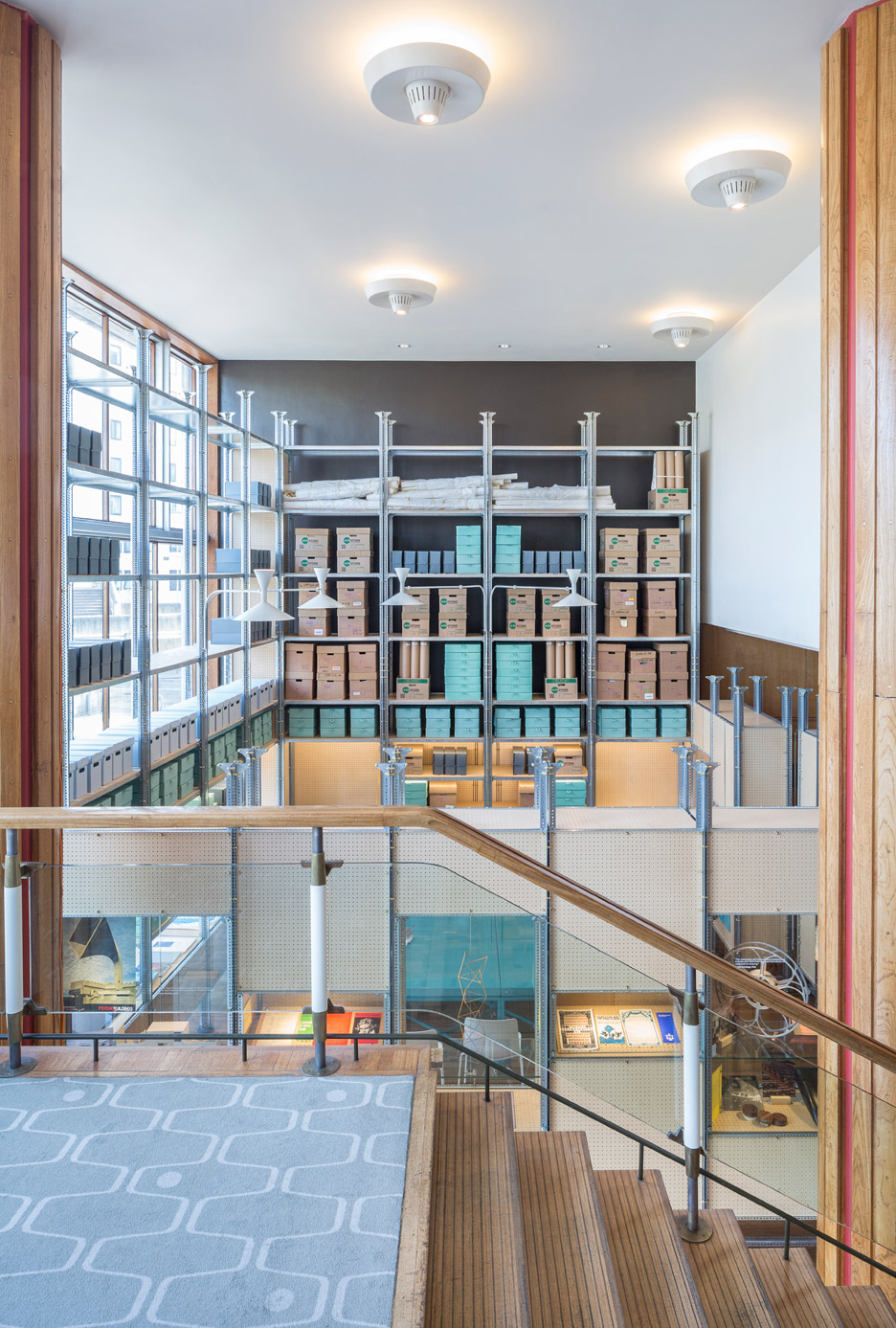
The archive material dates back to 1951, the year the Royal Festival Hall opened, and also the year that the Festival of Britain took place.
To reference this, the team chose Dexion Slotted Angle frames dating from the 1950s to create the archive's shelving structure. They then clad this in perforated hardboard, attached by brass dome-head nuts.
"We felt that the Archive Studio should be built from materials with a heritage value that would be easily associated with that period of time," Farrer told Dezeen. "The aim was to create a tangible connection with the archive material."
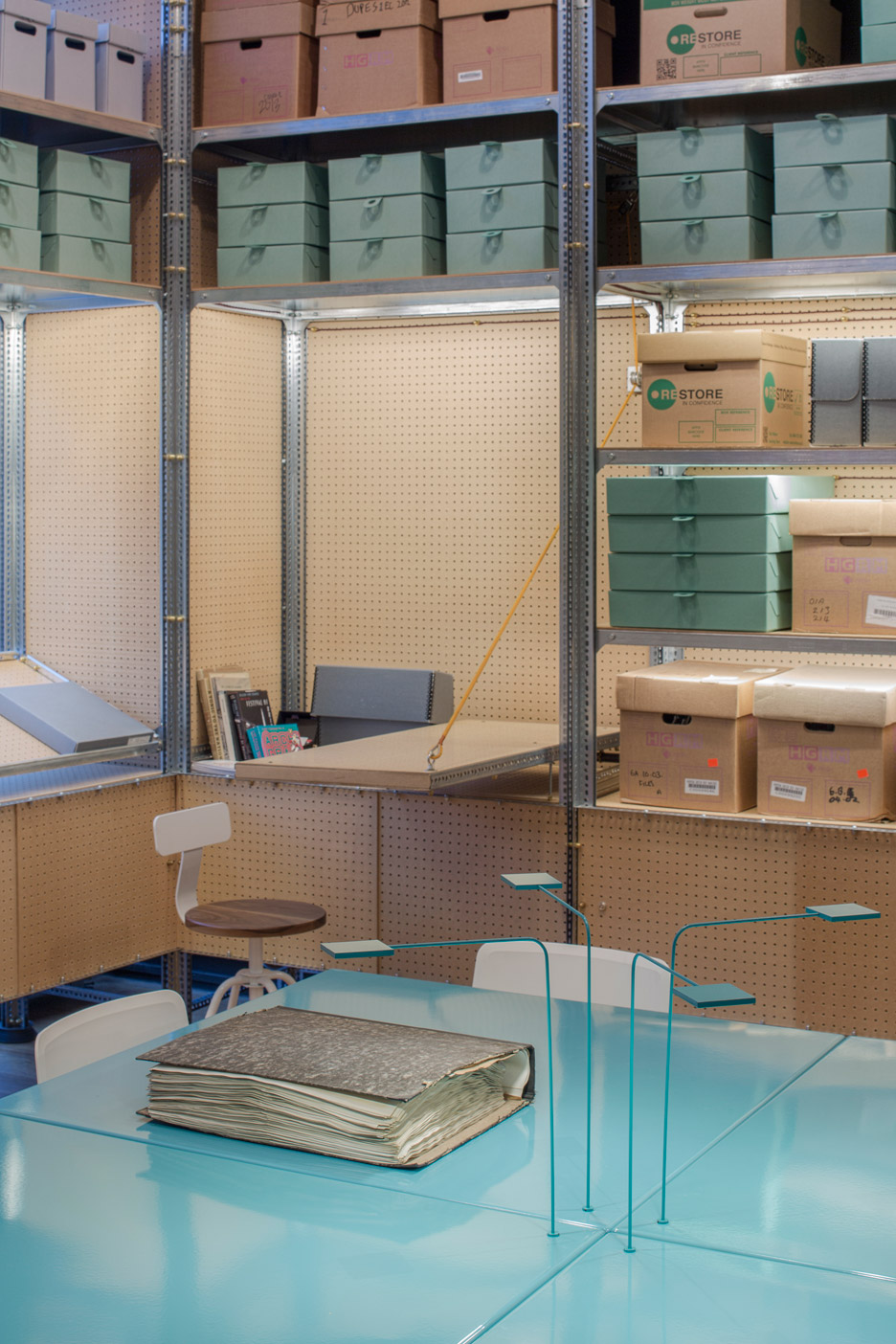
Two of the shelving units are six metres high, creating plenty of space to store archiving materials whilst they are being processed.
Situated in front of the windows, one of these units frames views of the Hayward Gallery and other adjacent buildings, and will be used as a permanent display space for historical objects found during the renovation.
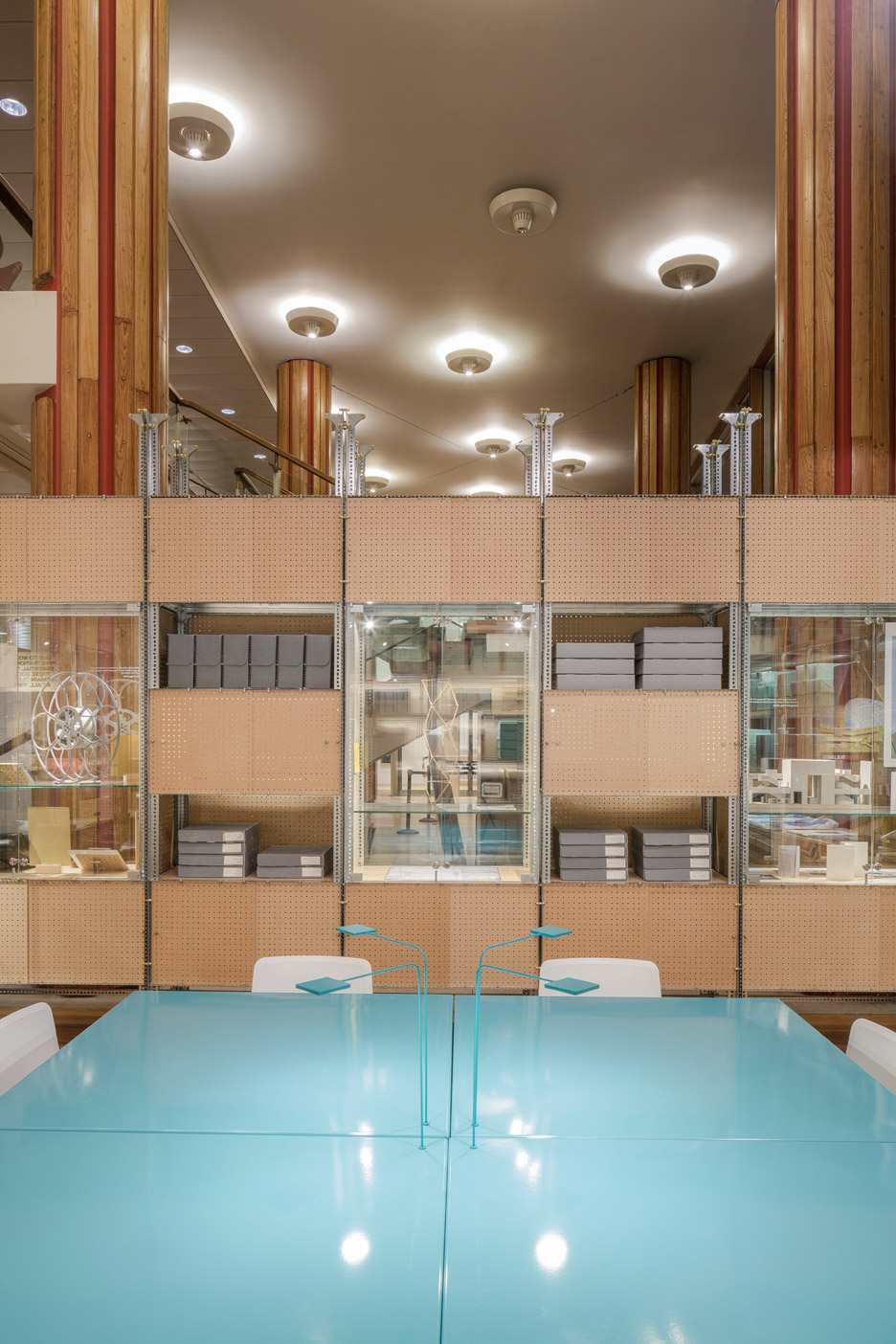
The other set of shelves, set against the back wall of the building, provides a storage area for archive boxes and poster rolls.
There are also two three-metre-high shelving units that face the interior of the foyer. These feature illuminated glass display cases, which also allow views between the archive and the Royal Festival Hall foyer.
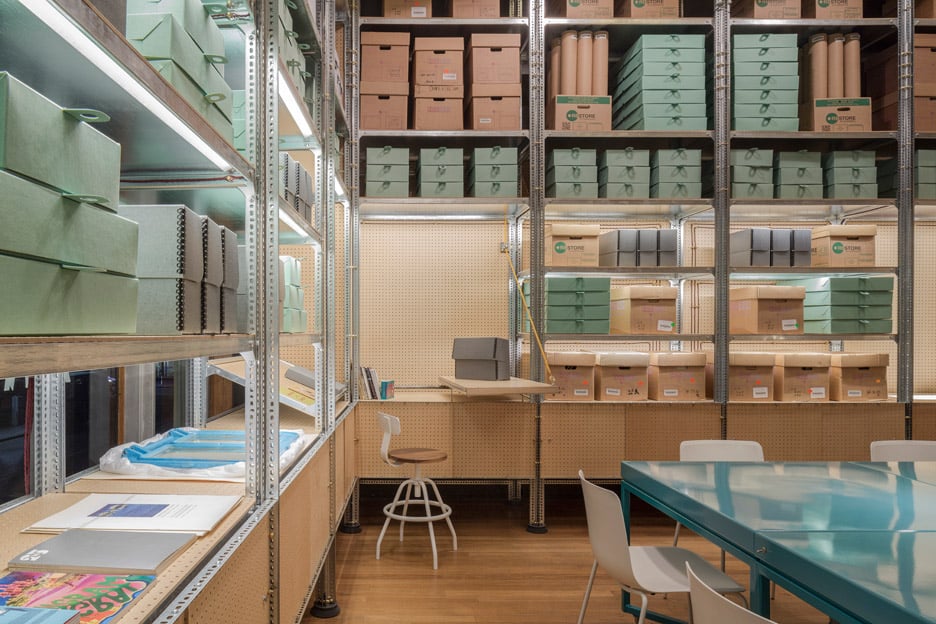
At the entrance, three bays of shelving on castors form a three-metre-wide hinged door. This can also function as a mobile display unit.
Other features include lockable cupboards with sliding perforated hardboard doors, a lightbox integrated into one of the shelving bays and a counterweighted fold-down desk operated on a series of pulleys.
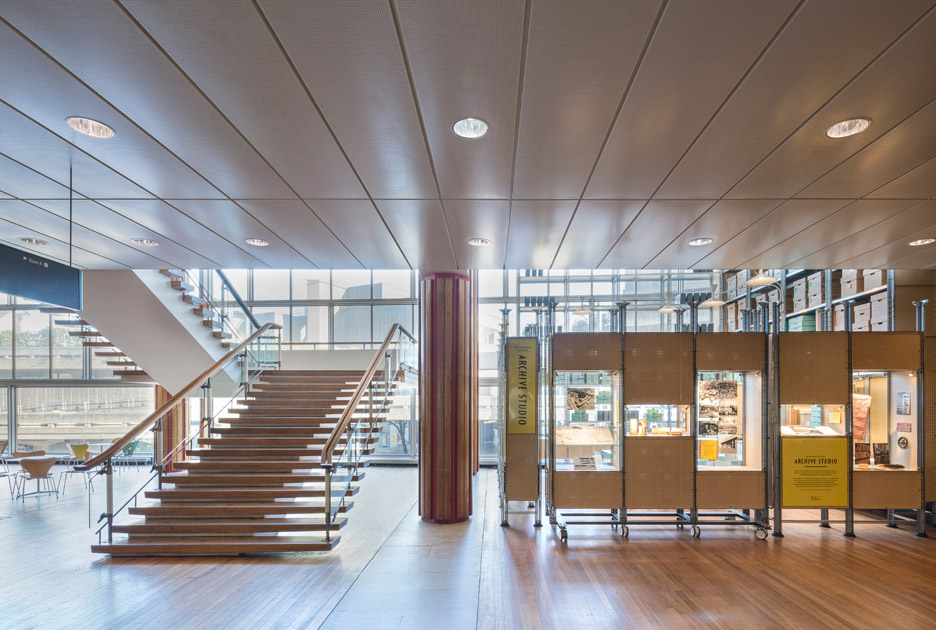
"There is an enjoyment in inspecting the archive close up, much like the archive material itself," Farrer told Dezeen.
At the centre of the archive are coloured, enamel tables for group working that can be rearranged for different activities. Overhead lighting hangs down on burgundy flexes, fixed to the Dexion with brass nuts.
"We didn’t want the Archive Studio to shout its presence but rather be a calm new addition to the Royal Festival Hall and ultimately one that feels like it might always have existed in the space," added the architect.
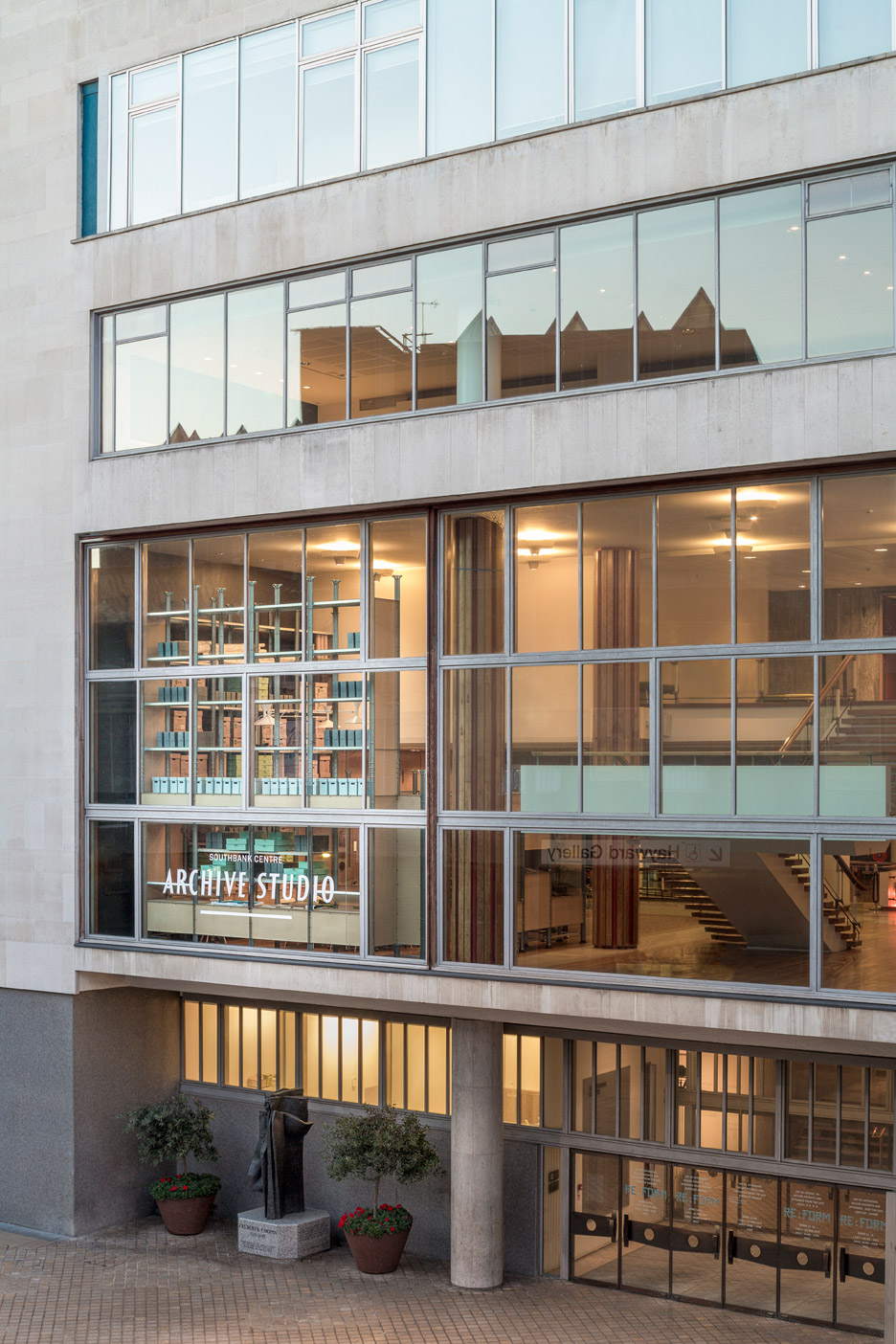
The Royal Festival Hall is the only remaining building from the Festival of Britain celebrations, which involved construction of the steel Skylon tower. The building was designed by London County Council architects Robert Matthew and Leslie Martin.
Other recent additions to the Southbank Centre complex include a series of temporary slides by Carsten Höller, a rooftop hotel room by David Kohn and a shipping-container restaurant by Softroom.
Photography is by Dirk Lindner.